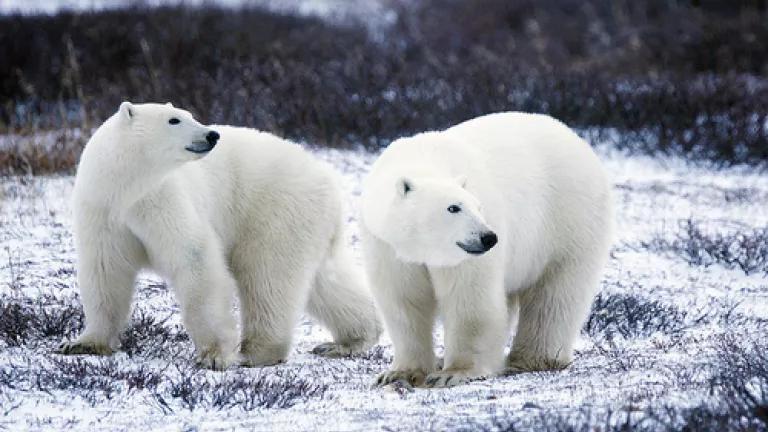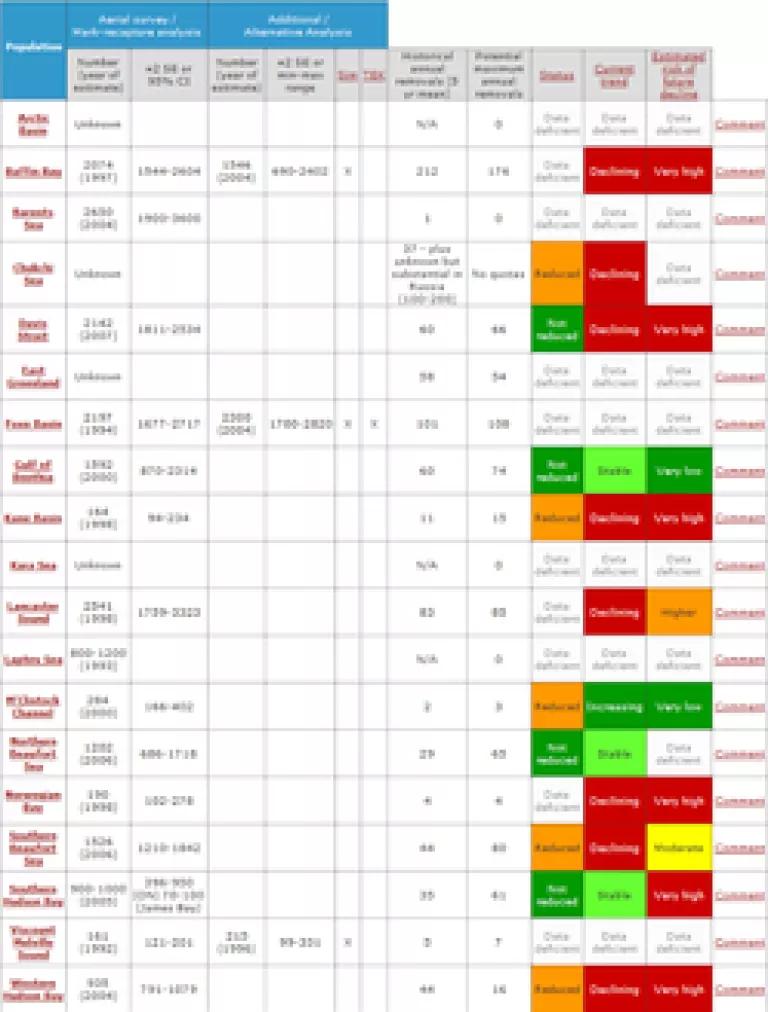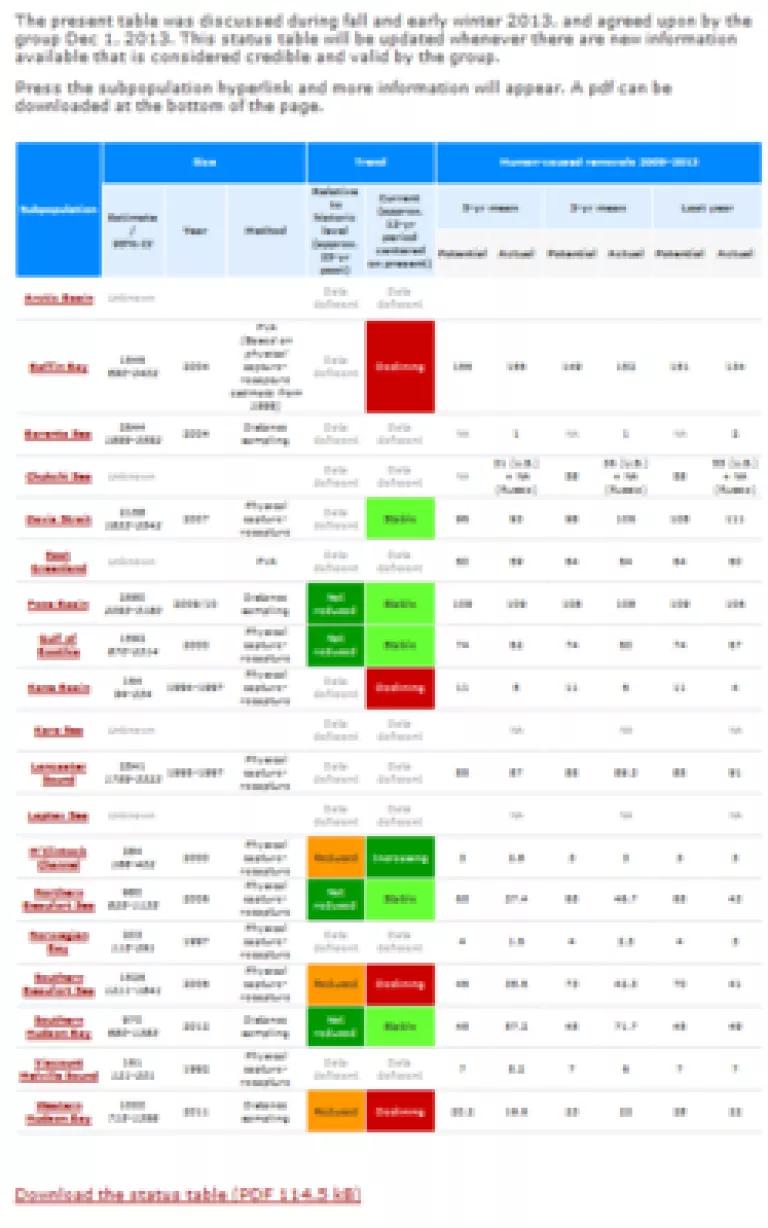New Polar Bear Population Assessment is Released: Commercial Hunting Continues, Even in Populations That Are Declining

Last week, some of the world’s leading polar bear scientists released the most up-to-date information about the world’s last-remaining polar bear populations. Although some populations have temporarily stabilized, the assessment also reveals a serious ongoing problem with hunting: Hunters are killing more than 200 bears a year from populations listed as “declining”; 163 bears a year are hunted from areas where the data is “deficient,” meaning there is not enough information to properly assess population trends; and hunting levels continue to be identified as a concern in a population thought to be stable.Yet, despite these figures, pressure on local wildlife management boards in Canada to raise polar bear hunting quotas, which many believe is the result of rising prices for polar bear pelts, continues.
So, what are the other major take aways from the recent population status information?
A new format makes comparisons with previous assessments difficult, and downplays future threats.
In a departure from previous updates, the polar bear group has reformatted its population status table. In the past, the polar bear scientists provided the populations “current status,” it’s “current trend,” and its “estimated risk of future decline.” It also provided an estimated “potential maximum removal” for each population (that is, the maximum number of polar bears that can be removed from a population without causing decline).
The new table provides two new trends: a current trend based on a 12 year historical average, which seems to collapse the previous distinction between current status and current trend), and a trend that is relative to historic levels. The new table no longer estimates risk of future decline. It also does not provide any estimate of maximum potential removal numbers, but it does provide much more information on past removal numbers over time. You can see images of the two tables here:


The result of all these changes is mixed. One the one hand, if you were to compare the current status to current trend between the 2010 table and the 2013 table, we see that in 2010 no polar bear populations were thought to be in decline, although five were tagged as reduced. In 2013, however, four polar bear populations are labeled as declining under current trend. But, if we compare current trend from 2010 to current trend in 2013, the number of polar bear populations thought to be declining has fallen from eight in 2010 to four in 2013. Of these four populations, only one population’s status (Davis Straight) has actually changed from declining to stable. The rest have been changed from declining to data deficient.
Of course, completely missing are the six populations that in 2010 the Polar Bear Specialist Group felt had a “very high” risk of future decline. Do the majority of polar bear scientists in the specialist group still agree with that assessment, I wonder?
Hunting for commercial trade and trophies is continuing in declining populations.
More important, the population status table shows that human caused mortalities continue in all four populations labeled as declining in the 2013 chart. For example, on average 150 polar bears are taken from the Baffin Bay population, which straddles Greenland and Canada and about 40 are hunted each year in the Southern Beaufort Sea. More than 20 polar bears are taken on average from the Western Hudson Bay. Bears also continue to be removed from the Kaine Basin population. Indeed, in all but one of these populations, the polar bear experts identified “harvest” as a vulnerabilities or concern.
Hunting for commercial trade also continues in populations where population stats and trends are data deficient.
It’s also important to note that harvest is continuing in many of the populations listed as data deficient, including 90 bears removed on average from the Lancaster Sound population. Moreover, some of these populations (including Lancaster Sound) were previously thought to be in decline.
Even for populations listed as stable, hunting is identified as a possible vulnerability.
Finally, just because a population is listed as stable or even increasing doesn’t mean that hunting is still not a concern. Indeed, the table notes harvest continues to be a concern in the Southern Hudson Bay, a population from which people kill on average between 50 and 70 bears a year, and, which to this day, does not have anything in place except for a voluntary quota.
Why do these numbers matter?
Because we know that a significant portion of polar bear hunts are not for subsistence purposes (that is, the use of polar bears as food, clothing, or material by native peoples) but rather for commercial purposes (native hunters selling polar bear parts into the international fur market) and for guided trophy hunts.
The idea of putting limits on international commercial trade in polar bear fur and parts remains controversial, but at the very least we should be able to agree that international commercial trade is inappropriate for populations that scientists agree are delining or for which population trends cannot be reliably assessed.

